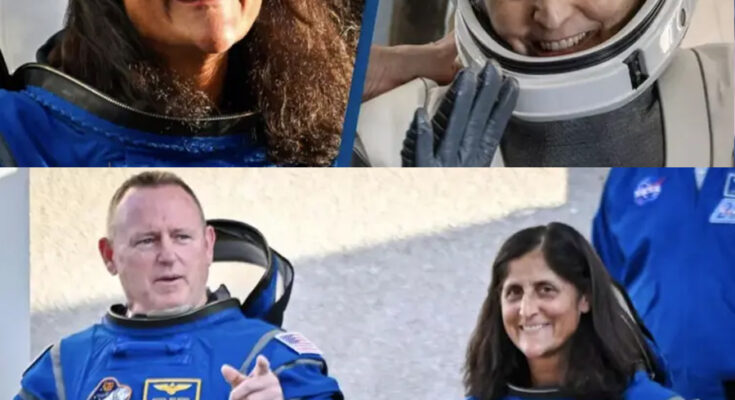After nine months of living in extreme microgravity conditions in orbit, two veteran NASA astronauts returned to Earth with a emaciated appearance and a declining physical condition.
On March 18, two astronauts, Barry Wilmore and Sunita Williams, were sent back to Earth aboard the SpaceX Dragon spacecraft after nine months of being “stranded” on the International Space Station (ISS). The two began their mission in June last year, but due to some technical glitches and complicated coordination plans, the repatriation took longer than expected.
Some experts said that the before and after photos showed that Barry Wilmore and Sunita Williams were thin, pale, and showed signs of weight loss. Experts assessed, under the skin are invisible lesions: fluid buildup in the head, affecting the optic nerve and brain, called: Space Travel-Related Visual Nerve Syndrome (SANS). SANS causes the optic nerve to swell, causing blurred vision or image distortion. In many cases, the condition can be reversed after a few weeks of returning to Earth, but with long-term missions such as those of Wilmore and Williams, the risk of long-term damage is not small.
The photo compares the obvious change in Sunita Williams’ appearance after 9 months. Photo: AFP
After making a safe landing off the Gulf Coast near Tallahassee, Florida, Wilmore and Williams were taken away on stretchers without being able to stand up or walk on their own. According to NASA, this condition is not uncommon in people who have just spent a long time living in a zero-gravity environment.
Microgravity weakens the musculoskeletal system due to the lack of traction of the Earth, making it difficult for the body to maintain muscle mass despite daily exercise. With a diet designed with high-calorie foods and specialized exercise, astronauts still can’t avoid muscle atrophy and noticeable weakness. In addition, changes in fluid pressure in the body also cause symptoms such as facial edema, dizziness, and nausea. This explains why Wilmore and Williams were unable to walk on their own when they landed.
Astronaut’s body changes after 9 months in space
NASA says the full recovery process can take anywhere from 45 days to several months, or even years with severe cases. The two are currently under close medical monitoring at the Johnson Space Center in Houston.
Sharing on RadioX, former British astronaut Tim Peake said: “For me, flying into space is not too difficult, but the first two days back to Earth are really tiring. The body has to get used to gravity again, the vestibular system is disturbed, the feeling of dizziness and nausea is normal. Butch and Suni will also need a few days to get through.”



